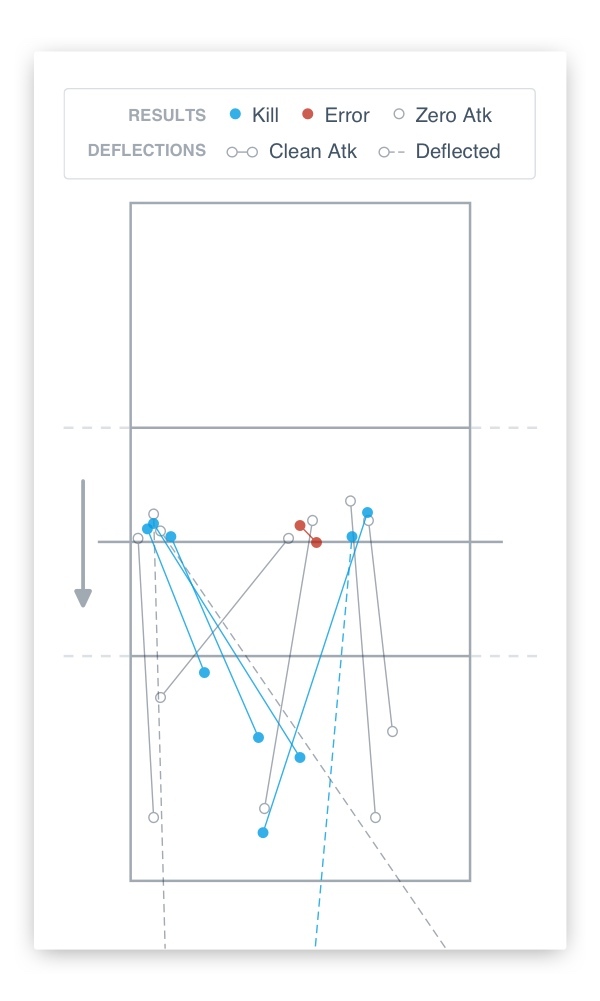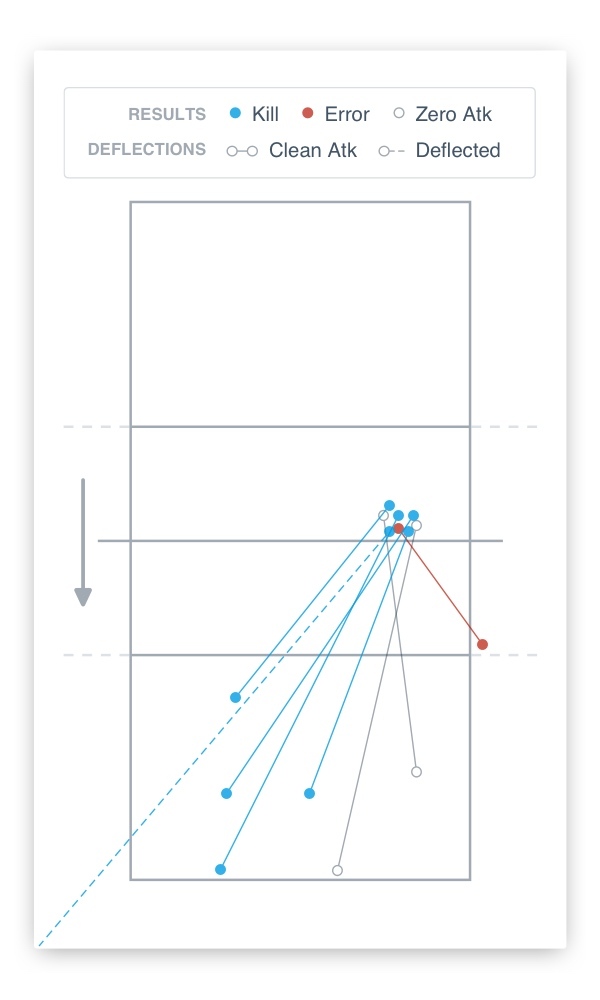Plan Your Attack: Blocking Strategies
No matter your team’s level of play, working on blocking technique and strategies is important. We’ll cover both in the last of our six-part series.
How effective are your team’s blockers? Is blocking something your athletes do because it’s what they’re supposed to do? Or are they intentional about the moves they’re making? After all, blocks are important—they build momentum quickly and allow you to funnel balls to your best defenders, while also forcing hitters to mix in different shots.
In the final blog of our series with The Art of Coaching Volleyball, we’ll show you how to identify weaknesses in your team’s front row defense, then dive into how coaches at Stanford and the University of Illinois teach their outsides and middles to have a more effective presence at the net.
The Problem
In your last match, you got swept. So you go to your reports on Hudl to dig into the data and see what went wrong. Your team won the serve-pass game, averaging a 90 percent serving percentage and four aces per set. But hitting was another story. Your opponent had a .250 hitting percentage and their middle had a .430 hitting percentage on her own. How did that happen? Turn to your attack tendencies report to find out.
The Diagnosis
You select your opponent to see their attacking strengths. To find out what went well for the opposing middle, you filter by her name. Some of her kills came from 1’s and 3’s, but a majority of the blue lines are happened behind the setter. You realize your middle and outside need to do a better job of anticipating the hitter’s approach so they’re up and pressing over the net early.

Next, you filter by your opponent’s outside who boasted a .300 hitting percentage. It doesn’t look like she was doing anything too tricky. Not a lot of deep line shots or even hard angle attacks. Most of her kills were landing in the middle back, which tells you your middle wasn’t closing the block.

The Solution
There are two problems to solve. First, your outside and middle need quicker reactions and earlier movements in order to stop the middle. The drill below from the USA Youth National team and the University of Illinois can help. Once you get your front row focusing on the hitter’s approach, rather than the ball, it’ll make all the difference.
Then you need to work on closing the block on the outside. In this drill from former Stanford head coach John Dunning, you’ll learn how to teach your middle the art of jump blocking. That way they’ll know what to do when they can’t get their feet all the way there or they need to adapt to a fast set.
Want to see more drills and coaching tips? Head over to The Art of Coaching Volleyball to start learning.




